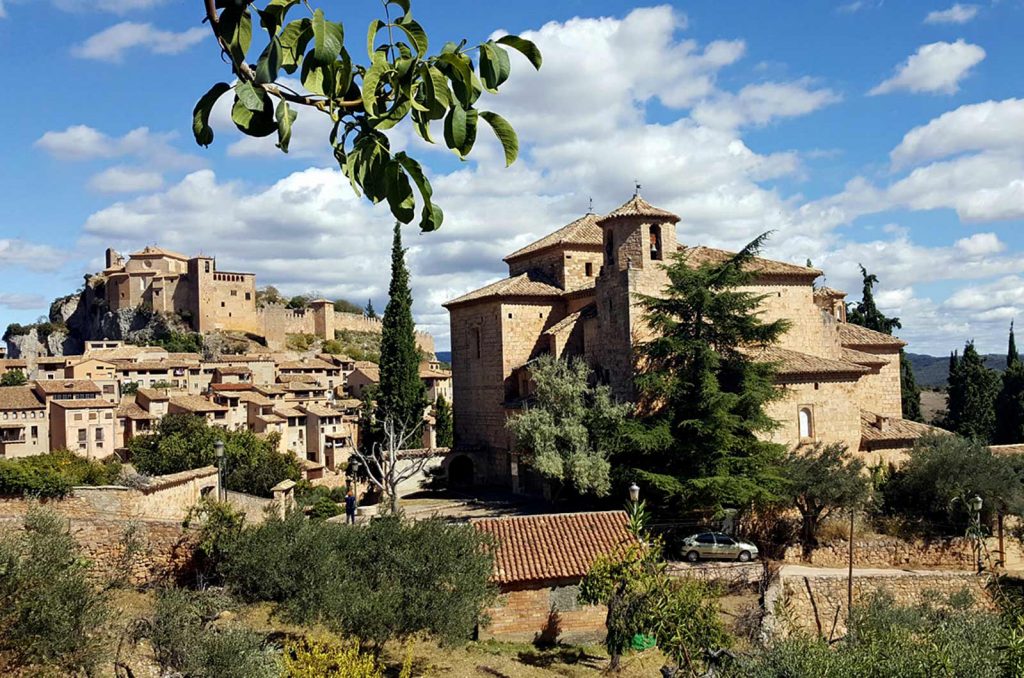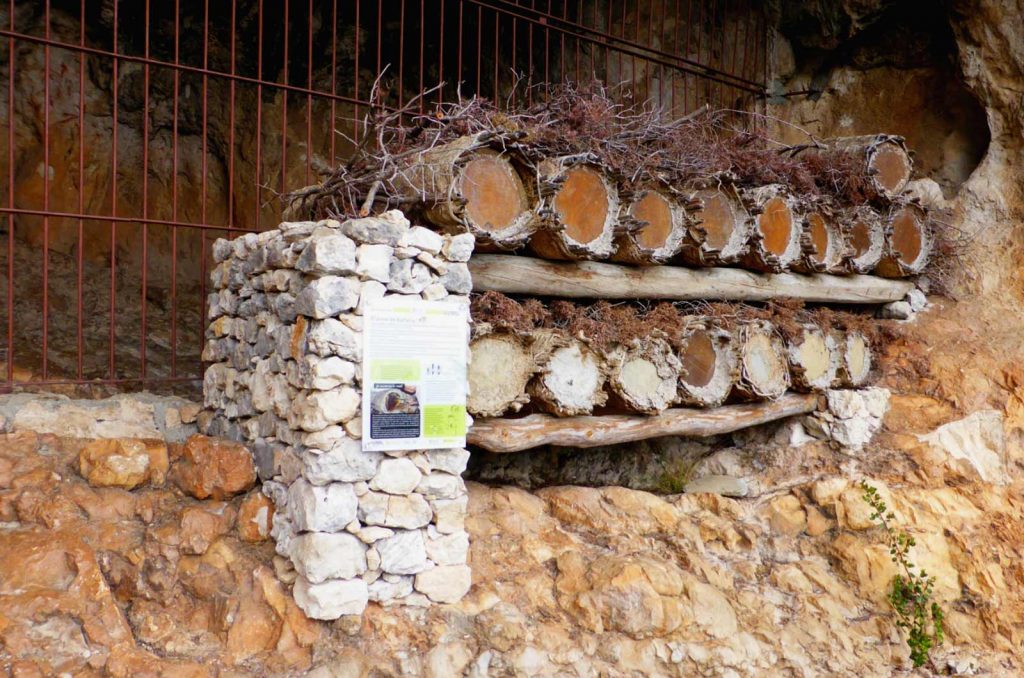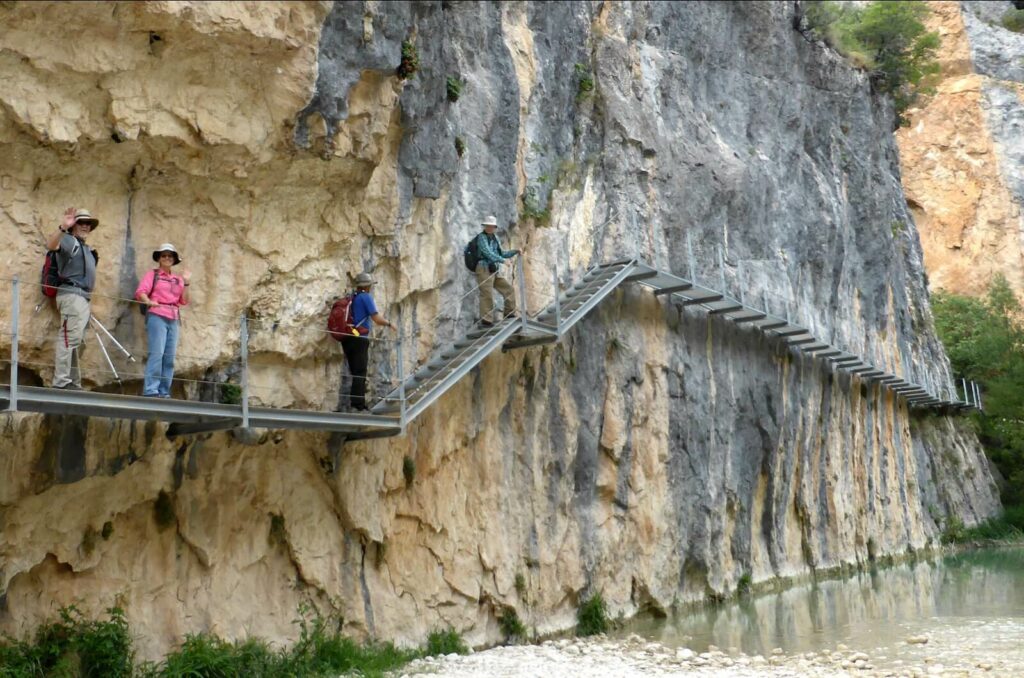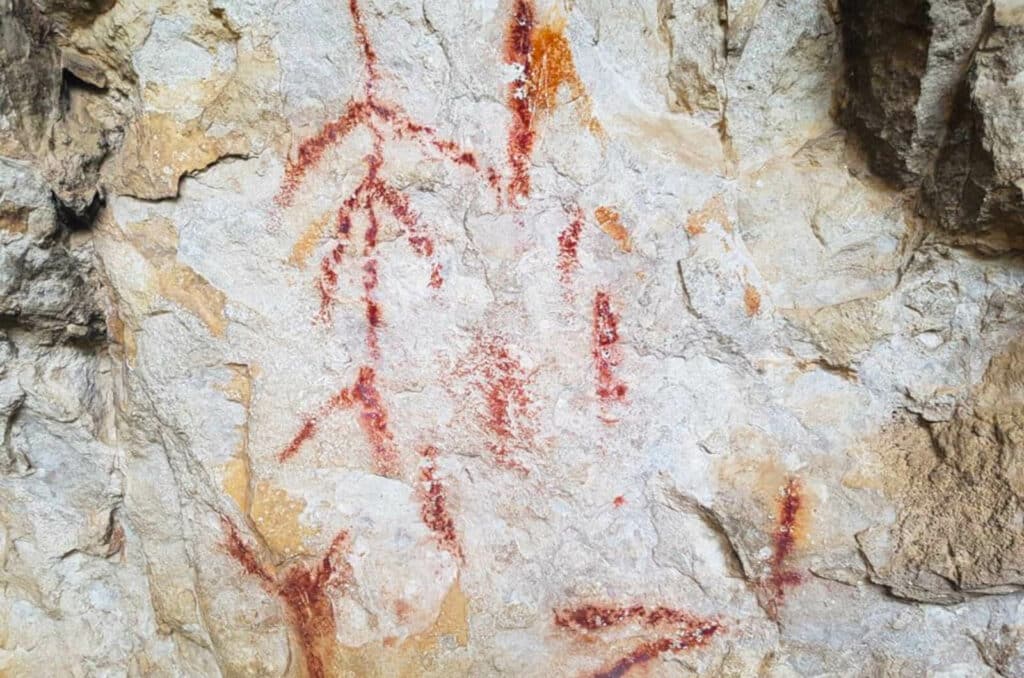Discover
The Sierra de Guara Natural Park
Established in 1990 the Sierra de Guara Natural Park is a dramatic area which covers over 812 km² and is the largest protected area in Aragon. It is both a World Heritage Site and an Area of Special Protection for birds.
Two immense rocks, San Miguel rock (left), 1123 m, and the Amán rock (right), 1124 m stand like gatekeepers forming a natural entrance to the Park.
Sierra means mountain range, derived from the fact the mountains resemble the teeth of a saw (sierra).
The sculpted landscape of The Sierra de Guara Natural Park
Landscape
Sculptured Towers
The predominance of limestone eroded by water and wind have formed a spectacular landscape with narrow canyons, gorges, caves, grottos and waterfalls. The impressive peaks of Tozal de Guara (2,078 m), Tozal of Cubilas (1,942 m) and the Cabezo de Guara (1,870 m) are the teeth of the Sierra!
On the southern border of the Natural Park the limestone gives way to conglomerate rock. Rock formed from stones and boulders washed down from the Pyrenees in the Tertiary period, and then fused together. The rivers then created immense vertical sculptures called “mallos.” One of the most famous being the Salto de Roldán.
MEDIEVAL VILLAGES AND HISTORIC WALKS
The Sierra de Guara Natural Park
The walking in the Sierra de Guara Natural Park is very different to the Ordesa National Park. On most of our Small Group Holidays we visit both. In Guara, our walks will often include a visit to a cave or to one of the historic villages, crossing medieval bridges and aquamarine rivers which contrast with the ochre of the rocks.
The architecture as well as the landscape is in marked contrast to what we see elsewhere. The influence of the Moors is much more evident, as in the town of Alquezar. The castle that gives its name to the town dates back to the 9th century, when it was built by the Muslims to resist against the Christian kingdoms.
ACCESS
The River Vero Cultural Park
There are over 60 caves within this UNESCO World Heritage Site all depicting cave art. We do visit the caves on our guided walks, but the art works are protected, so if you want to get close then it is advisable to book a guided visit. There are guided visits at the caves of Arpán, Mallata and Barfaluy and at Chimiachas and Regacens there are self-guided visits.
Within the Park there is a broad mix of flora and fauna. On the southern slopes the climate is Mediterranean. However, on the north facing slopes and in the deep gorges the climate is more Atlantic. The diversity within the Park reflects this with over 150 species of birds and over 20 raptors, as well as 137 different butterfly species. On our guided walks in the Park, which are very much a part of our Small Group Holidays, we invariably see griffon vultures, and during spring Egyptian vultures.
More to Explore
Posets-Maladeta
To the north east is a second natural park, the Natural Park of Posets-Maladeta. Home to the highest mountain in the Pyrenees, Pico de Aneto at 3,404 m (11,168ft). It is also one of the most important high mountain ecosystems in the whole of Spain.
You can find more information on our Blog.














